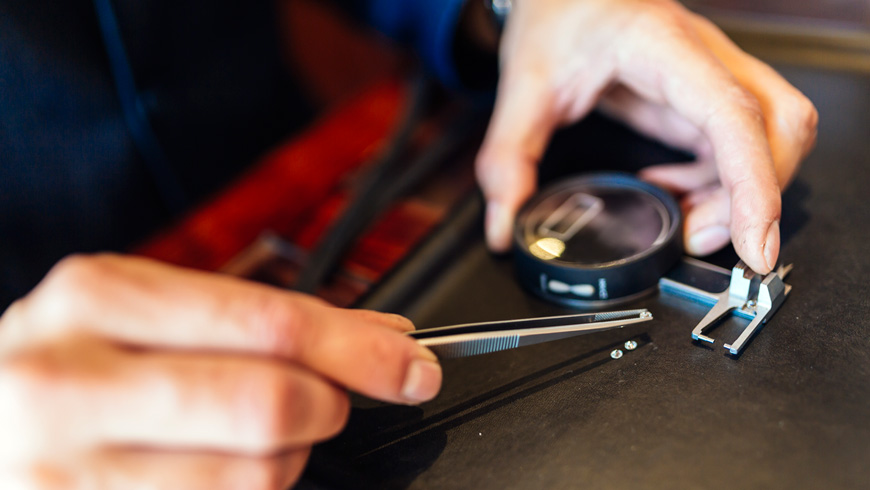Diamond Cut
A cut of diamond is largely dictated by the amount of flaws that the raw stone has, popularity of a certain shape, and the size of the raw stone. Flaws consist of inclusions and blemishes. Inclusions are located inside the stone and can vary depending on the location and the condition under which the diamond was formed. Blemishes are located in the surface and therefore are more evident. Depending on how apparent they are, both inclusions and blemishes can detract from the value of a diamond by decreasing the stone’s brilliance. However, it is important to note, that there are no flawless diamonds. Every diamond will have its own unique set of imperfections and challenges which will dictate the way it is cut.
A skilled gemcutter will always try to maximize the brilliance of a diamond by cutting it in a way that either obstructs or hides the flaws of the stone. After examining the stone, the gemcutter will decide on a number of symmetrical facets laid out in a specific pattern which will define the final shape of the stone. Round brilliant cut is the most popular choice for a diamond. This cut is mathematically and imperially pleasing and usually maximizes the brilliance and the carat weight of a stone.
Fancy cut is usually dictated by current fashion trends. There are nine popular diamond cuts:
Princess Cut: This is the most common cut found in engagement rings because of the shapes flexibility in various ring settings and styles. If you are unsure of the shape that you want to choose, you can’t go wrong with the Princess cut diamond.
Oval Cut: When you are talking diamonds, size matters. Oval cut will create an illusion of larger diamond for a price of a smaller stone. Additionally, oval cut diamonds have greater a greater degree of brilliance than other cuts.
Marquise Cut: These diamonds are “football” shaped and can appear significantly larger than an oval or a round cut diamonds while delivering the optimal degree of fiery brilliance.
Pear Cut: This is a hybrid cut diamond that combines the marquise cut and the oval cut. A properly cut pear shaped diamond is symmetrical with the apex of the rounded edge making the “wings” symmetrical.
Cushion Cut: This diamond resembles a pillow, hints its name. The cut resembles a square cut with rounded corners. Cushion cut diamonds have been in style for over 200 years, making this cut a timeless classic.
Emerald Cut: Emerald cut diamonds are highly prized for the interplay of light within the diamond. The only downside of this cut is that it shows flaws better than any other cut. If you are going to go with an emerald cut diamond, make sure that it is possible to cover the inclusions with the setting or that the stone is near perfect.
Asscher Cut: This cut has originated in Holland. The cut is very similar to the emerald cut but with a smaller table (the face of the diamond) and larger step cuts (sides).
Radiant Cut: Rectangular in shape this cut shares some attributes of round and oval cuts making it just as bright and yet modern, unusual, and unexpected.
Heart Shape: This cut screams love and affection. One of the most popular cuts in pendants and engagement rings this cut is as brilliant as round or oval cut. However, diamonds of this shape need to be over .50 carats in size, otherwise the shape can get lost in the setting.
Although the number of facets that each cut is comprised of is universally agreed on, crown height, pavilion depth, table diameter, girdle thickness, crown angle, and pavilion angle differ from region to region and can also impact the brilliance grade of the stone.

